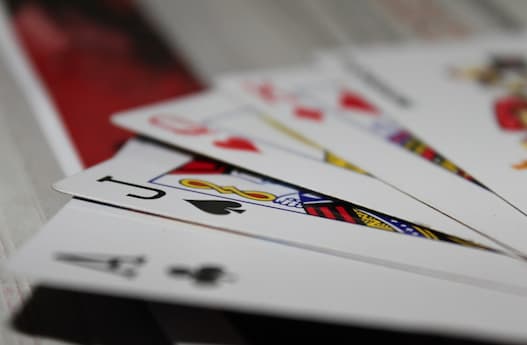Strategies and Tactics in Card Games: Improving Decision-Making Skills
Card games have been enjoyed by people for centuries, captivating players with their blend of skill, luck, and strategic thinking. From classic game like Poker to modern collectible card games like Magic: The Gathering and Hearthstone, card games have become a popular pastime for enthusiasts around the world. One of the key elements that make card games engaging and challenging is the strategic decision-making involved. In this essay, we will explore the importance of strategies and tactics in card games and how they can significantly enhance decision-making skills.
Understanding Strategies in Card Games
Strategies form the foundation of successful gameplay in card games. They involve a well-thought-out approach and long-term planning to achieve specific objectives. In card games, strategies encompass a range of concepts such as resource management, timing, and overall game plan. Different strategies can be employed, depending on the type of game and the desired playstyle.
For instance, in aggressive or “aggro” strategies, the player focuses on applying relentless pressure and overwhelming their opponent with quick and aggressive plays. On the other hand, control strategies involve carefully managing resources, neutralizing threats, and maintaining a defensive position until the optimal moment to strike. Combo strategies, meanwhile, revolve around executing a specific sequence of cards to create powerful synergies or win conditions. These strategies require a deep understanding of the game’s mechanics and available card pool.
The impact of strategies on decision-making skills cannot be overstated. By employing effective strategies, players gain a clear sense of direction and purpose in their gameplay. They learn to evaluate the board state, anticipate their opponent’s moves, and make informed decisions that align with their overarching strategy. This level of strategic thinking enhances players’ ability to make sound decisions not only in card games but also in various real-life situations where critical thinking and planning are essential.
Tactics: The Building Blocks of Strategy
While strategies provide the broader game plan, tactics serve as the specific actions and maneuvers that players employ to execute their strategies. Tactics are the micro-level decisions made on a turn-by-turn basis, aimed at gaining advantages over opponents or mitigating risks.
Common tactics in card games include acquiring card advantage, which involves drawing more cards than the opponent, and thus having more options and resources at one’s disposal. Another crucial tactic is tempo, which focuses on maintaining control of the game’s pace and initiative. By understanding the importance of tactics and their interplay with strategies, players can make informed decisions at each step of the game.
Tactics also play a significant role in improving decision-making skills. They require players to think on their feet, adapt to changing situations, and capitalize on opportunities. By incorporating various tactics into their gameplay, players develop agility in decision-making, enabling them to adjust their plans and capitalize on emerging opportunities.
Enhancing Decision-Making Skills through Strategies and Tactics
Strategies and tactics in card games are not just about winning matches; they have broader implications for improving decision-making skills. By engaging in strategic thinking during gameplay, players enhance their ability to analyze complex situations, weigh risks and rewards, and make informed choices based on available information.
Strategic thinking hones skills such as pattern recognition, problem-solving, and logical reasoning. It encourages players to consider multiple possibilities, anticipate outcomes, and plan ahead. This level of cognitive engagement translates into improved decision-making skills in various areas of life, including critical decision-making at work, problem-solving in personal relationships, and even financial planning.
Real-life examples abound where players have successfully applied their card game decision-making skills to other domains. For instance, professional poker players are known for their ability to make calculated risks and read opponents’ intentions, skills that can be valuable in negotiation or investment scenarios. The transferability of decision-making skills from card games to real-life situations underscores the practical value of strategies and tactics.
Developing Strategies and Tactics
Developing effective strategies and tactics in card games requires a proactive approach and a commitment to continuous improvement. Players can begin by understanding the game mechanics, studying the metagame (the current trends and strategies adopted by top players), and analyzing successful gameplay strategies employed by experienced players.
To improve decision-making skills, players should focus on specific tactics such as analyzing the game state thoroughly. This involves assessing the cards in hand, the cards on the board, and the potential future moves of both the player and the opponent. Practicing critical thinking and evaluating different scenarios help players make better decisions under pressure.
Furthermore, it is crucial to adapt strategies and tactics based on changing circumstances. Card games are dynamic environments, and successful players are those who can adjust their plans to counter opponents’ strategies or take advantage of emerging opportunities. Flexibility, adaptability, and a willingness to learn from both victories and defeats are essential for growth as a player.
Overcoming Challenges in Applying Strategies and Tactics
Implementing strategies and tactics in card games can present challenges for players. Some common obstacles include adapting to new card releases, dealing with unexpected moves from opponents, and managing psychological factors like frustration or overconfidence.
To overcome these challenges, players should stay updated with the game’s meta and study new card releases. By understanding the evolving landscape, players can adjust their strategies and tactics accordingly, ensuring they remain competitive in the ever-changing environment.
Additionally, players should develop emotional resilience and discipline to manage psychological factors. Emotional control is crucial in making objective decisions and avoiding impulsive moves that can compromise the overall strategy. Reflecting on both successes and failures can provide valuable insights and lessons for future gameplay.
In conclusion, strategies and tactics form the bedrock of successful gameplay in card games. By employing effective strategies, players develop critical decision-making skills that extend beyond the gaming table. The interplay between strategies and tactics enhances cognitive abilities, fosters strategic thinking, and improves skills such as problem-solving and pattern recognition.
Developing effective strategies and tactics requires a proactive approach, continuous learning, and adaptability. Overcoming challenges and managing psychological factors are also integral to successful implementation. By applying these concepts, players can elevate their decision-making skills, not only in card games but also in various real-life scenarios that demand critical thinking and strategic planning. So, let’s embrace the world of card games as not just a form of entertainment but also as a training ground for sharpening our decision-making skills.
Table of Contents


